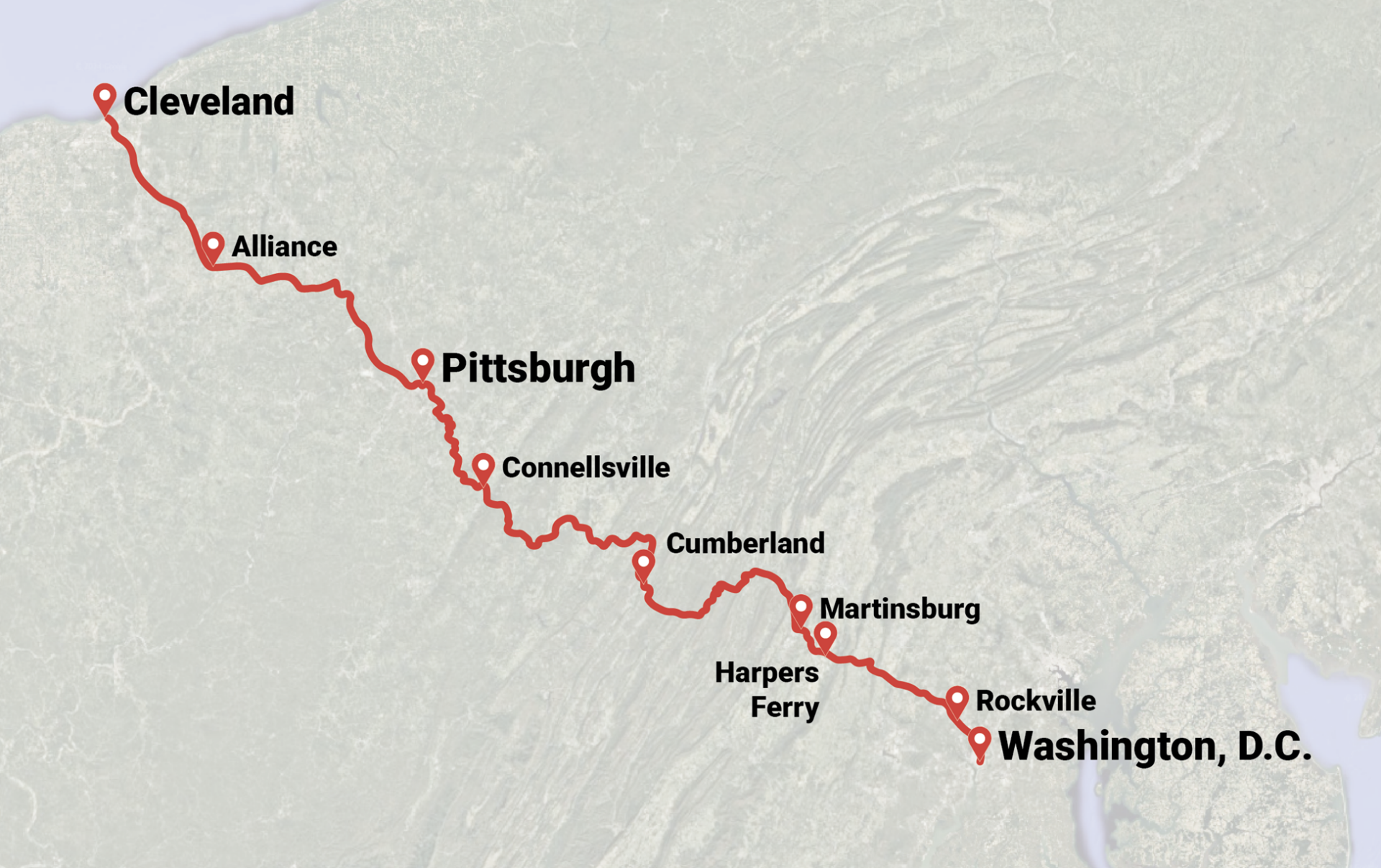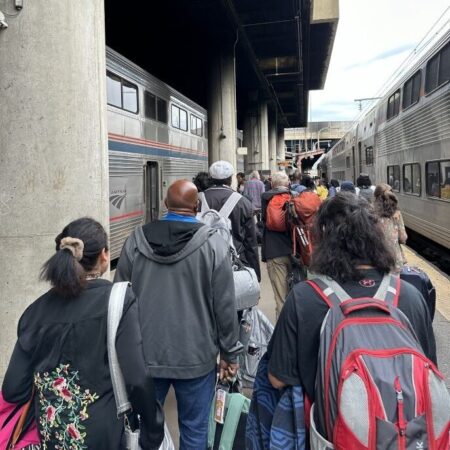When our leadership asked if I was interested in going to last year’s American Public Transit Association’s (APTA) Rail Conference in Cleveland, Ohio, I couldn’t say “yes!” fast enough. I’ve long desired to expand Foursquare ITP’s position in the rail planning industry, and the time has never been better. The previous four years have provided an unprecedented number of resources for enhancing intercity and passenger rail in the United States (via the Infrastructure Investment and Jobs Act, or IIJA), and I’ve been helping the company track where these investments may create opportunities for us to support these projects. When I noticed that there was also a direct Amtrak ride—granted, an 11-hour ride—from Washington, DC to Cleveland, I realized that the best way to understand America’s intercity rail was to take it myself aboard Amtrak’s Capitol Limited (who has now been absorbed by Amtrak’s Floridian service, rest in peace). A 3:00 a.m. estimated arrival time in Cleveland was a small price to pay for this unique opportunity.

Yes, I know the flight would’ve been faster.
As I told my partner, my dad, my therapist, and even my dog when he looked at me quizzically as I was packing, I knew flying would have been faster. I’ll be transparent and admit that I took the flight to get back home; arriving at Cleveland in the middle of the night is one thing, but catching the return trip in the middle of the night was more than I could bear after three days of networking. However, the one-hour flight back came with strings: dealing with TSA, increasingly tight airplane seats, a weather delay, and at least an hour travel from the airport.
In comparison, the walk from my apartment to Washington Union Station is approximately five minutes, and the walk from the Cleveland Amtrak Station to my hotel was only about twice that. When you factor in the additional time flying takes, the time difference between my rail and air experiences shrank from 11 hours to five hours.
I was pleasantly surprised to see a full train.

I arrived at Union Station about 25 minutes before our departure and was surprised to see several dozen people already ahead of me in line! I grew up in Texas (where taking Amtrak is well outside the norm for most) but I’ve lived in the northeast long enough now to know how popular Amtrak can be. However, I’m still (embarrassingly) surprised when I see anyone using a service not connected to the Northeast Corridor (NEC). Imagine my surprise to see enough people to fill almost the entire train by our first stop.
Amtrak staff divided passengers in two groups: those traveling to Pittsburgh, Pennsylvania, and Chicago, Illinois (I imagine the two biggest destinations out of DC), and everyone else. From my limited observations and eavesdropping, I know some were commuters returning home to Maryland and West Virginia while others were on the long-distance haul like me.
We arrived on-time or early to every city on the route.
One element of train travel (or even car travel) that I enjoy compared to flying is having intermediate destinations to serve as checkpoints. I derive immense satisfaction every time we pass through a major city (whether it’s a major city, or just a major city to me). The Capitol Limited arrived on-time in Rockville, Maryland, Foursquare ITP’s original home (I used to watch the same train from our office window). We gained some time and ended up in Pittsburgh nearly 40 minutes early, meaning we sat in the station for 40 minutes to get back on schedule (I would’ve been fine leaving right away, but I guess other passengers matter too, sigh). The rest of our stops were less significant, but I did give myself a mental high-five when we crossed into Ohio, and I was able to mark another state off my travel list.
Overall, it was a pleasant experience that left me wanting more.

Despite the length of the journey and my inability to sleep on the train, I really enjoyed my first non-NEC Amtrak ride. The sessions I attended at the 2024 APTA Rail Conference further helped me see the potential of rail travel and how the United States has a long way to go in terms of building a robust and competitive intercity network. Thanks to IIJA, the country has new funding opportunities for significantly expanding and overhauling America’s rail infrastructure at every level, so now is the time to leverage them!
My trip on the Capitol Limited was one of choice, and any of the inconveniences I faced were an accepted cost. For many of the communities we passed, the daily train that passes through at 1:00 a.m. is a vital lifeline for connecting residents with the rest of our country. While that has been an argument I’ve understood and supported my entire career, it has become more salient after relying on the service firsthand.
I might not be able to commit to taking the train every time I travel, but I will commit to supporting and working towards expanding our national rail network, in terms of coverage and frequency, so that more people have a true choice in how they travel.